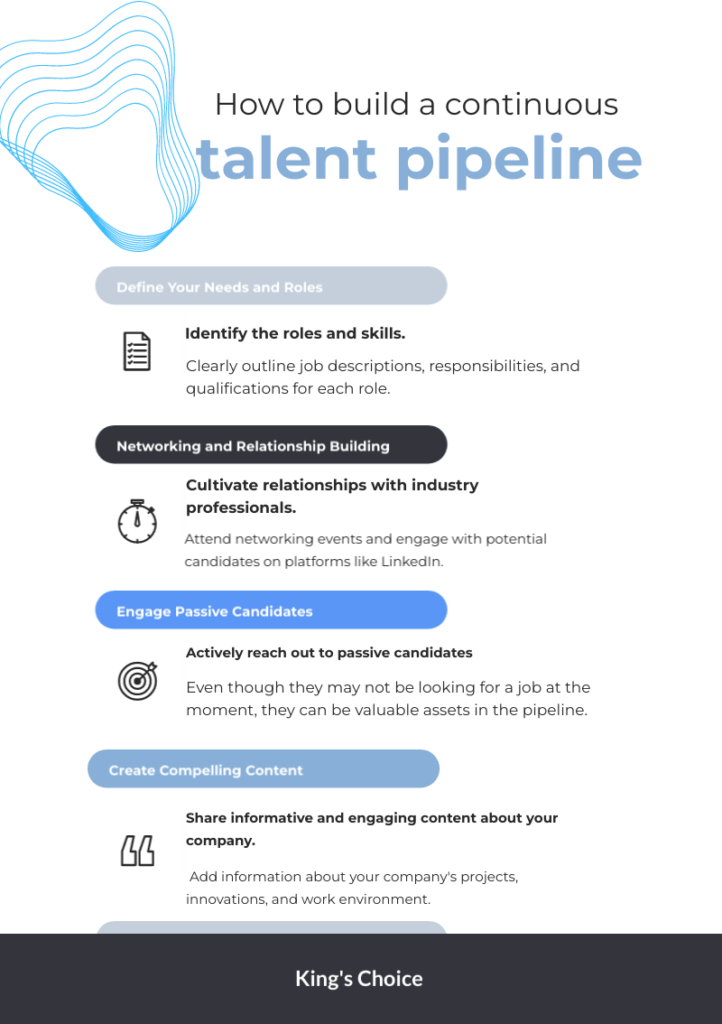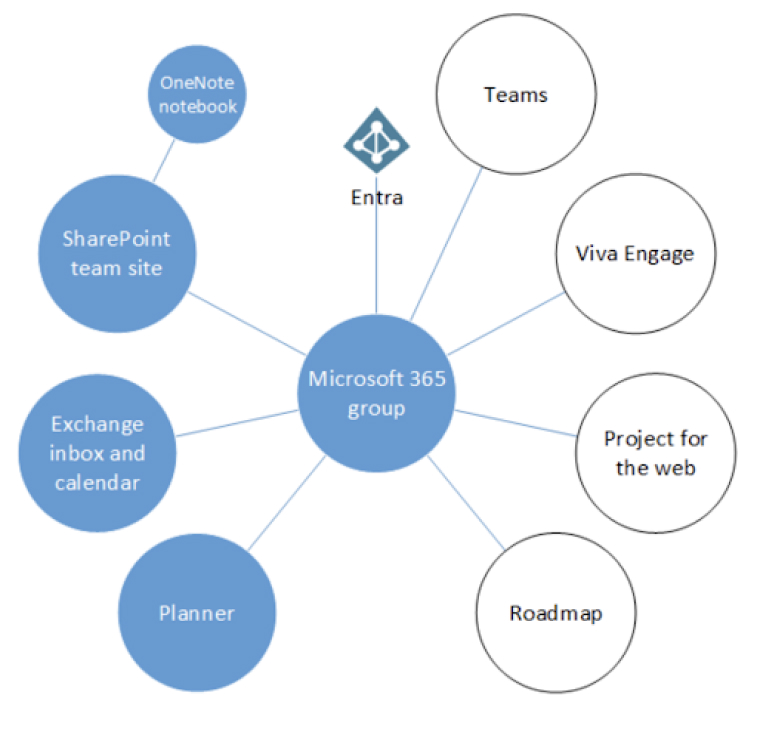Why Hiring Developers Is So Complicated [And What You Can Do About It]

Intro
Hiring developers differs from bringing onboard other specialists — the rapid growth of technology, unique technical expertise, cultural compatibility, and other nuances make it quite a difficult task.
Each time a client approaches our recruiting agency to hire an experienced developer, they encounter specific issues, whether it’s an absence of specialists with the right skills or concerns associated with the salary arrangement. While some can be easily resolved, others demand a creative and dedicated approach. Yet, all of them have a solution.
In this article, we’ve collected common issues that our clients have come across during the hiring process, along with practical solutions on how to effectively address them, based on our 10 years’ experience.
Current state of the matter
Looking at the latest statistics, it’s clear that the job market for qualified candidates, especially developers, is highly competitive. Only 14% of specialists are actively looking for new opportunities while the rest is already settled with a job.
The challenge is two-fold. On one hand, recruiters basically need to find a needle in a haystack when it comes to developers with the right mix of experience, technology stack, cultural fit, and skill set.
And to make matters more complex, we’re in the middle of the economic world crisis and an overheated market. This means candidates have plenty of options, and companies are fiercely competing for the same talent.
Finding developers who excel in terms of skills, experience, salary expectation poses a real challenge. Good thing we know that every challenge comes with a solution — let’s zoom in on each issue.
Navigating Hiring Challenges: Best Practices
No doubt hiring experienced developers is not an easy task. But does it mean your efforts are doomed to fail? Not exactly. It all depends on the hiring solutions you’re adopting. There is no quick fix when it comes to hiring top talent. Yet, with the right set of knowledge, dedication, or help from a recruiting agency, you can stay competitive even in the most overheated market.
Challenge 1: High Demand for Tech Talent
One of the most complex challenges in tech recruitment is the demand for tech talent.
First off, there’s often a shortage of developers with those specific skills we’re after. New technologies pop up faster than we can say “coding,” and it’s tough to find experienced professionals who are up to date with everything we need. And even when we do spot someone with the right skills, guess what? They’re in high demand, and everyone wants a piece of them.
Then, when it comes to salary arrangement, developers on the other side of the table who fit the role know their worth and may ask for a salary that’s way beyond your budget.
Lots of companies need qualified developers, but what can we do to win the fight if the demand exceeds the real number of candidates? Actually, there are quite a few ways.
Practical Solutions
Work on continuous talent pipeline
Developing a continuous talent sourcing strategy will keep you ahead of the curve. Build and maintain a continuous talent pipeline by actively networking with potential candidates, attending tech events, and engaging with tech communities. Establishing relationships with potential hires even before positions become available can save time during urgent hiring needs.

As a bonus, you’ll likely build a robust professional community you can turn to. At King’s Choice, we’ve successfully used this approach too – one of our posts garnered 75,000 views and helped us get 15 CVs. Once you have a thriving community, all it takes is a humanly-written post to land at least a few valuable interviews.
Develop employer branding
Employer branding is a story about dedication and input. It’s not built overnight and there is no end date. That’s why the earlier you start working on it, the more chances you get to see real results. Even if you’ve heard it already, it’s worth mentioning again:
Invest in your employer branding. That’s something you won’t regret.
Showcase your company culture, exciting projects, and opportunities for career growth. Highlight employee testimonials to provide an authentic glimpse of what it’s like to work at your organization. Brainstorm what makes you special with the team, spread the word about your company wherever applicable, test new ideas, iterate, improve, and repeat.
Challenge 2: Rapidly Evolving Technology
Rapidly evolving technology presents a significant challenge for IT recruitment.
Let’s take AI as an example to make a point. The AI industry is progressing at an unprecedented pace, with new frameworks, algorithms, and tools surfacing almost daily. As a result, the skill sets required for this role are in constant flux.
The first challenge here is to find candidates who possess the latest and most relevant AI expertise. While many potential candidates may have solid backgrounds in traditional software development, keeping up with the ever-changing AI landscape proves challenging.
But even when we do come across candidates with some AI experience, accurately assessing the depth and applicability of their knowledge becomes a daunting task.
That’s why you need to focus both existing talent while also attracting new developers who value continuous learning to stay ahead of the ever-evolving trends.
Practical solutions
Implement tech learning and development programs
Implementing learning and development programs dedicated to keeping developers updated on rapidly evolving technology is your go-to solution. There’s quite a few methods to make it happen:
- Organize regular workshops and webinars conducted by internal experts and external industry leaders. These sessions can cover trending technologies, new frameworks, and best practices.
- The easier solution would be investing in subscriptions to online learning platforms that offer comprehensive courses on the latest tech topics. Developers can access self-paced courses to upskill themselves on their own time.
- Organize internal hackathons — workshops with 2-5 people in the group focused on solving a certain issue. Make it centered on experimenting with emerging technologies.
- Support both developers and recruiters in attending relevant tech conferences and seminars where they can network with industry professionals and gain insights into technology trends.
Challenge 3: Specific Skill Requirements
The tech landscape is evolving at lightning speed, and we’re always on the lookout for candidates with the exact skills we need for our projects. But here’s the thing – finding developers who tick all the skill boxes is still quite a challenge.
First off, the recruitment process can get dragged out when we’re dead set on specific skills. We want to make sure we’ve got the best of the best, but that can mean sifting through loads of resumes and conducting lengthy evaluations. Time is money, and we can’t afford to wait too long to fill those essential roles.
Plus, putting too much focus on specific skills might make us miss out on some real gems. Sometimes, a candidate might not have the exact skills we thought we needed, but they’ve got the right attitude and a passion for learning. What can you do in this case?
Practical Solution
Stay open to similar options
Hiring based solely on specific skills can leave you stranded when the tech tide shifts, and suddenly, you’re stuck with a team that’s not as adaptable as you need them to be.
By considering candidates with transferable skills, you might just uncover some hidden gems – developers who can quickly level up and become a perfect fit for your projects.
That’s why it makes sense to define the must-have skills and experience clearly in the job description, but also be open to candidates with related skills who can adapt and learn quickly.
Partner with a recruiting agency
Recruiting agencies have a valuable advantage: the ability to offer pre-vetted specialists. With their carefully curated talent pool, you gain swift access to candidates who have already been assessed for their skills, experience, and cultural fit. This streamlined hiring process enables you to seize opportunities quickly and stay ahead of the competition.
Any decent recruiting agency constantly works on their talent pipeline, not just a talent pool, which is why they always have an ace up their sleeves. They keep a close eye on the ever-evolving tech landscape and seek out emerging specialists. This proactive approach makes it possible to access the latest tech stars before they become the hottest commodities in the market.
Challenge 4: Complex Technical Interviews
When it comes to hiring developers, those complex technical interviews can be quite the challenge. Sure, we want to make sure we’re bringing in the best of the best to the team. But sometimes, those interviews can be so intense and demanding that they can scare off even the most talented candidates.
Think about it – we’re asking candidates to solve complex coding problems on the spot, often under pressure. It’s a solid way to gauge their technical skills, but it might not always reflect how they perform in real-world scenarios. Some candidates might excel in their day-to-day work but struggle to shine in those high-stress interview situations. There’s an alternative way to approach the interview process to make everyone feel comfortable — let’s dig in.
Practical Solutions
Embrace real-world projects and scenarios
Instead of bombarding candidates with mind-boggling puzzles, how about mixing things up a bit? You can design technical assessments that mimic real-world projects and scenarios.
Try creating a collaborative coding project, simulating how developers would work with your existing team. Or you can give them a coding challenge that mirrors a task they might encounter on the job.
That way, you get to see how candidates approach problems and work with others – skills that are vital in a fast-paced, team-oriented environment.
Focus on soft skills through behavioral interviews
Yes, technical expertise is crucial, but so are adaptability, communication, and teamwork.
You can dig into developers’ experiences, asking how they handled challenges in past projects and how they collaborated with their colleagues. By tailoring your interviews to encompass a broader view of a candidate’s abilities, you can ensure you’re building a strong, well-rounded team that can tackle any challenge that comes your way.
Get 10 behavioral interview questins you should be asking your developers
Challenge 5: Remote and Distributed Workforce
The world has experienced a significant shift in the way we work, and remote work has become the new norm for many organizations. And it’s not just a passing trend; there are solid reasons why remote work is here to stay for the long haul.
While it offers exciting opportunities in terms of hires, it does present some unique hurdles for us to navigate.
Now, we can hire developers from different cities, countries, or even continents. But with this vast talent pool comes the challenge of managing time zones, coordinating interviews and team meetings.
We want our developers to feel connected, collaborate seamlessly, and enjoy a sense of camaraderie. But when team members are scattered across different locations, nurturing that cohesive team spirit can be not as easy.
With remote work, we rely heavily on virtual communication tools. While they’re fantastic for connecting people, sometimes miscommunication can occur. We need to ensure our team members are adept at using these tools effectively to keep everyone on the same page.
Practical Solutions
Use communication and collaboration tools
Encourage team members to actively use communication tools like Slack to stay connected, share updates, and collaborate on projects. Schedule regular virtual meetings to foster team cohesion and provide a space for open discussions.
Additionally, having a centralized document-sharing platform, such as Google Workspace or Microsoft 365, ensures that everyone has access to the latest files and project updates, promoting transparency and efficient workflows.

Set clear remote work policies and expectationsEstablishing clear remote work policies and expectations is vital to ensure that remote team members understand their roles and responsibilities. This includes setting clear guidelines for work hours, availability, and communication response times.
Provide remote employees with a comprehensive onboarding process that outlines the company’s remote work culture and best practices. Offer training on using remote work tools effectively and guide them on how to balance work and personal life when working from home.
Regularly communicate updates on company policies and address any concerns or questions from remote team members.
Challenge 6: Lengthy Hiring Process
Clearly, developers are in high demand, and they’re hot commodities in the job market. When our hiring process drags on for too long, we risk losing top talent to other companies that move faster. You hardly want to find the perfect candidate, only to see them accept an offer from someone else because it took you too long to make a decision.
A lengthy hiring process can also reflect poorly on the company’s decision-making. Developers are often juggling multiple opportunities at once. They’re busy people with impressive skills, and they won’t wait around forever. So, if it takes ages to get back to them after an interview or keep them hanging with no updates, there are high chances for them losing interest and enthusiasm.
How can we tackle this challenge?
Practical Solutions
Streamline the hiring process
We don’t want to sacrifice quality for speed, so a solid solution here would be to streamline the hiring process while ensuring it remains effective. Collaborate with the hiring team to create a clear road map from posting the job opening to extending the offer. Make sure you understand everyone’s area of responsibility — you can use the template below and edit it online (it’s clickable).
Use automated tools for initial resume screening
Automated tools not only save time but also ensure a fair and objective screening process by focusing on relevant skills and qualifications. This way, you can dedicate more time to interacting with the most promising candidates and making informed decisions. Workable, Greenhouse, or Zoho are some examples of the popular automated tools out there.
Challenge 7: Salary Expectations
It can be a real bummer when you’ve gone through a lengthy hiring process, found the perfect developer with all the right skills and cultural fit, and then get stuck at the salary arrangement stage.
Developers with in-demand skills are well aware of their market value. They know their worth, and they’re not afraid to ask for competitive salaries. With the demand for tech talent on the rise, top developers often have multiple job offers on the table, which gives them the upper hand when negotiating compensation.
Is there a way to attract the right talent without breaking the bank? By addressing salary expectations thoughtfully and strategically, you can navigate this challenge and create compelling offers that attract top developers.
Practical Solutions
Be transparent about salary ranges from the start
Our clients don’t always realize how much of a difference salary transparency can make.
This transparency sets the right expectations and ensures that candidates who apply for the position are comfortable with the salary on the offer. It also saves time for both parties by avoiding unnecessary interviews with candidates whose salary expectations don’t align with the budgeted range.
In job postings and during initial discussions with candidates, clearly communicate the salary bracket or range offered for the role.
Offer a competitive total compensation package
Be prepared to discuss not just the base salary but also other components like performance-based bonuses, benefits, equity options, professional development opportunities, and work-life balance initiatives.
Highlighting the comprehensive benefits of working with the company can make the overall package more attractive to candidates. Emphasize the long-term growth prospects, company culture, and unique perks that demonstrate the organization’s commitment to employee well-being and professional development.
Challenge 8: Diversity and Inclusion
The tech industry has historically been male-dominated, leading to a lack of diversity in the talent pool. This can result in a limited representation of women, underrepresented minorities, and individuals with diverse backgrounds in the candidate pool.
Creating an inclusive workplace where all employees feel valued and heard is crucial, but it’s not always easy to achieve. Unconscious biases can unknowingly influence hiring decisions, leading to missed opportunities to hire talented developers from diverse backgrounds.
Practical Solutions
Partner with organizations that promote diversity
Partnering with organizations that promote diversity in tech is a proactive way to reach a wider talent pool and foster a more inclusive hiring process.
These organizations, such as women in tech groups, minority-focused professional associations, or diversity-focused job boards, actively support underrepresented groups and provide opportunities for diverse talent to connect with potential employers.
It’s a win-win solution: the partnership itself demonstrates the company’s commitment to diversity and inclusion while also helps attract individuals from diverse backgrounds who may not be reached through traditional recruitment channels.
Establish diverse interview panels
Create diverse interview panels that include employees from different backgrounds, experiences, and roles. Having diverse perspectives in the interview process can help reduce biases and provide candidates with a more inclusive experience.
Candidates will feel more comfortable and confident when interacting with a panel that reflects the company’s commitment to diversity. Diverse interview panels can also offer unique insights into a candidate’s potential fit within the organization’s culture, making hiring decisions more well-rounded and inclusive.
Challenge 9: Diverse Coding Backgrounds
Different coding backgrounds mean that developers may have learned and adopted various coding languages, frameworks, and methodologies.
While diversity in coding skills can be beneficial, it can also lead to communication and collaboration issues within development teams. Team members might find it challenging to understand each other’s code or have differing approaches to problem-solving, which can result in inefficiencies and delays in project development.
Moreover, when developers with diverse coding backgrounds work together, it may take some time to align their coding practices and standards. This process of merging different coding styles and practices can slow down development processes and hinder project progress.
Practical Solutions
Establish coding standards and best practices
Create a set of coding standards and best practices that all developers must follow within the organization. This will provide a common framework for coding, regardless of individual backgrounds, and promote consistency and readability in the codebase.
Regular code reviews and feedback sessions can help ensure that everyone adheres to these standards.
Encourage cross-training and learning opportunities
Promote a culture of continuous learning and cross-training within the development team. Encourage developers to share their expertise and knowledge with each other. Organize workshops, knowledge-sharing sessions, or coding challenges that allow team members to learn from one another and expand their coding skills.
King’s Choice solution
At King’s Choice, we stand by the idea that well-established processes along with a personalized approach is the key to top hires. Working exclusively with middle and senior level candidates, we’ve come up with a process that facilitates the hiring process while taking into account all the necessary nuances. That’s why we look at your particular case and then use the ways we know to tackle any challenge and find the right candidate.
When you partner with us, the process begins with a simple questionnaire, where you can provide detailed information about your company, the vacancy, and key requirements. We then analyze the information and follow up with additional questions to better understand your specific demands and requirements.
Start by getting to know our recruitment process & timelines to see if we can be helpful.
Wrapping Up
By understanding the challenges and implementing these practical solutions, we can strike the right balance between efficiency and effectiveness in our hiring process. As a result, we’ll attract top talent and build a dynamic team that propels the company to new heights. Remember that all working solutions require dedication, but the results can surprise you in the long run.





